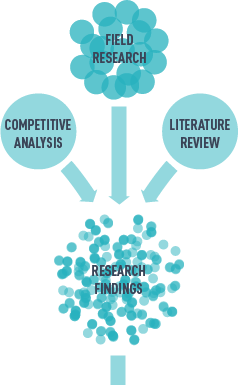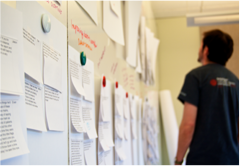

In January 2012, we began the data gathering phase of our research. We had two goals for our research: understand physicians’ needs when entering patient data in Electronic Medical Records, and understand how a solution to these needs fits into the existing landscape of medical software.
Data gathering consisted of a literature review, a competitive analysis, and field research. The literature review involved a detailed review of scholarly articles about our problem space. Our competitive analysis looked at both direct and indirect competitors, and informed our understanding of how M*Modal fits into the ecosystem of medical software. Finally, field research involved semi-structured interviews and contextual inquiries with 18 medical professionals working in a variety of specialities and medical institutions across the United States. This process shed light on physicians’ wants and needs, both expressed and inferred.



Our data analysis allowed us to collect our findings into overarching themes and big ideas. We analyzed our data from the ground up. We started by analyzing and modeling data from each individual participant, mapping out sequences, communication flows, and cultural relationships that played out in physicians’ work lives. Modeling this data helped the team to build a shared understanding of each interview. From there we synthesized the data across participants to uncover patterns and themes in the data. These themes would guide our design.

As we moved into visioning, our research insights were translated into design opportunities. The team brainstormed around these opportunities to come up with preliminary visions. In May, our research findings were presented to M*Modal along with our preliminary visions. These early visions were used to guide our conversation with M*Modal and help shape the direction of our efforts in the design phase of the project.

